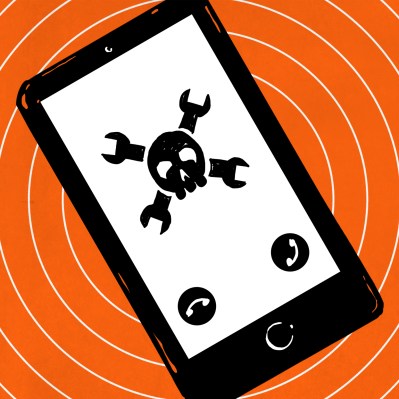[Maya Posch] wrote up an insightful, and maybe a bit controversial, piece on the state of consumer goods design: The Death Of Industrial Design And The Era Of Dull Electronics. Her basic thesis is that the “form follows function” aesthetic has gone too far, and all of the functionally equivalent devices in our life now all look exactly the same. Take the cellphone, for example. They are all slabs of screen, with a tiny bezel if any. They are non-objects, meant to disappear, instead of showcases for cool industrial design.
Of course this is an extreme example, and the comments section went wild on this one. Why? Because we all want the things we build to be beautiful and functional, and that has always been in conflict. So even if you agree with [Maya] on the suppression of designed form in consumer goods, you have to admit that it’s not universal. For instance, none of our houses look alike, even though the purpose is exactly the same. (Ironically, architecture is the source of the form follows function fetish.) Cars are somewhere in between, and maybe the cellphone is the other end of the spectrum from architecture. There is plenty of room for form and function in this world.
But consider the smartphone case – the thing you’ve got around your phone right now. In a world where people have the ultimate homogeneous device in their pocket, one for which slimness is a prime selling point, nearly everyone has added a few millimeters of thickness to theirs, aftermarket, in the form of a decorative case. It’s ironically this horrendous sameness of every cell phone that makes us want to ornament them, even if that means sacrificing on the thickness specs.
 Is this the same impetus that gave us the cyberdeck movement? The custom mechanical keyboard? All kinds of sweet hacks on consumer goods? The need to make things your own and personal is pretty much universal, and maybe even a better example of what we want out of nice design: a device that speaks to you directly because it represents your work.
Is this the same impetus that gave us the cyberdeck movement? The custom mechanical keyboard? All kinds of sweet hacks on consumer goods? The need to make things your own and personal is pretty much universal, and maybe even a better example of what we want out of nice design: a device that speaks to you directly because it represents your work.
Granted, buying a phone case isn’t necessarily creative in the same way as hacking a phone is, but it at least lets you exercise a bit of your own design impulse. And it frees the designers from having to make a super-personal choice like this for you. How about a “nothing” design that affords easy personalized ornamentation? Has the slab smartphone solved the form-versus-function fight after all?
















I really miss landscape keyboard phones. I keep trying to find a modern N900 replacement.
Daily drove an original fxtec pro1 for 5 years and it was nice to have the keyboard, and Sailfish provided linux, but Sailfish’s lack of native apps + the requirement of Volte meant I had to go back to android.
9ish months ago I switched to a Furi Labs FLX1 which is frankly amazing to basically have a full linux device, with the debian repos AND volte AND android container in my pocket. But no keyboard
Maybe you could adapt something like this design to your phone:
https://liliputing.com/this-3d-printed-case-turns-an-old-phone-into-a-slider-with-a-qwerty-keyboard-and-touchpad/
Yeah I saw that a while ago. Bluetooth though :(
That is great! But I used to have an HTC Desire Z – still one of the best designed phones I’ve had, with a great keyboard which, despite me using it as a fidget, so I must have opened it a million times, didn’t fail in the 3 or so years I used it, even when I dropped it and the screen was toast (which I could replace myself!)
I don’t even have a case on my current CompactMini smartphone, because despite it being marketed as such, it’s very close to phablet territory and thus would be too wide and tall with one.
And let’s not forget how the godawful phablets have become the norm.
And all the idiots saying ” just use X, Y or Z to compensate” all clearly don’t understand the crux of the problem being that smartphones have gotten big in the wrong ways.
It’s literally a institutional issue.
Pretty sure you are in the minority and the majority wants giant phablets because that’s what people buy?
The bigger issue is why people go for giant screens, namely that they spend their life on their phones.
The more I unplug from my phone the bigger and sillier it seems
hard to say what the majority wants when their choices are so constrained. i used to bother to shop for a small phone before buying a large one, and now i don’t even bother, i just buy a large phone because i know the small phone market is so limited. but i want a small phone. i think. i haven’t used one in so long, i can’t be sure.
how many people are in my boat? hard to tell. probably not a majority but we’re surely a significant fraction of big phone buyers.
Bigger phones are easier to fumble and drop, and thus easier to break. It’s hard to tell whether people buy bigger phones because they prefer them, or because they have to replace them more often.
I’ve got an Oukitel WP21 Ultra. It is almost big enough to hide behind and would probably stop a bullet. Its 64M camera is crap, and firmware upgrades practically non-existent. Why do I put up with this bilge?
Because the battery is nigh on 10Ah, it packs a TB, it’s built like a ceramic outdoor sanitary unit, and has an excellent FLIR built in which I use for fault-finding all the time. Even powers my soldering iron.
As a phone phone, I way prefer my old HTC 21 Pro. But for functionality that suits my life, the WP21 wins.
you’re using a phone as a powerbank for a soldering iron??? now THAT is a hack
I have an iPhone 12 mini – and some days I think it’s too big. I understand why someone would want a big phone, but I’m not one of them and apparently I’m in the minority. I cannot express how perfectly sized the original iPhone was.
But a lot of people use their phones as their primary device. And that drives the desire for a larger screen (along with the desire for a longer battery life.)
This reminds me of the UK olympics team management, who decided to issue 900 identical red bags to all their team (sporters and staff) in the 2016 Rio Olympics. It alledgedly took them four hours to get out of the airport, with a lot of that time spent in athletes finding which of 900 identical bags was theirs: https://www.independent.co.uk/sport/olympics/rio-2016-team-gb-s-decision-to-issue-900-identical-kit-bags-leads-to-chaos-at-baggage-claims-on-return-from-olympics-a7208666.html
RE: logistics is never easy, especially when planned by those the least capable, politicians, so-called “managers”, bean-counters, etc etc. Leaders (TRUE leaders, not wannabees littering our airwaves as of late) could quickly figure out a solution that would suit the majority of the participators and coordinate the efforts. Morons who got thrust into position of power by chance of luck won’t know that – it is NOT one of those moments when they’d shine, improvisation is NOT their cup-o-tea.
Have this been a military challenge, one simple yell “everyone, grab whichever red bag is next to you and march out – we’ll sort these LATER!” would spare four hours. Apparently the logistics were left to the masses to sort out on its own, and it shows. I also do not understand what was the importance of finding your bag individually, without coordination, but that’s usually how randomly formed crowds operate, mostly in uniform helpless chaos, punctured by an occasional self-formed isles of sanity (I am pretty sure some members figured out to attach some kind of a standout label to theirs), that struggles to settle into some kind of a productive/stable course of action.
I don’t think there would have been a “later” as the people would have gone their own ways after leaving the airport. Contacting the people and arranging for the exchange of bags later would have taken more than the four hours.
i know people do buy vanity cases, and personal choices definitely influence which case to buy. but among my social circle, we buy cases because we want our phones to survive. cases reduce damage from drops and (maybe) from water, and also reduce the rate of drops because they aren’t as slippery as a lot of fad phone designs.
if i was trying to express my personality, i’d rather have a naked phone. but i’d drop it and it’d bust.
exactly, cases aren’t about personal design, they are about protecting an expensive asset.
I still miss phones getting smaller and smaller – I’d prefer a small phone rather than a general purpose tablet which also does phone calls (which current phones have become)…
They also make phones less slippery. I can’t understand why a phone maker hasn’t seen the light and added knurling to their phones. Probably the baleful residual influence of Jony Ive and his fetish for form over function, specially once he lost adult suprvision from Steve Jobs.
Mine has. That’s part of the reason I bought it.
Thank you for your feedback, it is very valuable to us.
– Next phone –
Our new phones now have beautiful slick glass back that pushes the boundaries of design to the next level.
(Phone manufacturers)
See, that’s why I’m still here.
I came for the hacks but stayed for the people with the ability to objectively discuss a topic – despite having different opinions. A rare skill these days.
This is so true, I feel like discussions nowadays (with most people) are about winning and emotions not about finding a common ground or getting progressive solution to a problem.
IMHO, form follows function once the function is 100% known and settled on, otherwise it alters the function, imperceptibly or not. Witness how the LCD clocks started with many buttons, then eventually settled on just THREE buttons, for example – now good luck finding the function that’s still present, but requires few clicks of those buttons to arrive at, I bet most people no longer bothered with fiddling and just went with the minimal available functionality (just the time, please, forget then alarm and the seconds).
IN my Other HO, cell phones are a terrible example, their function is MANY THOUSANDS on the same platform (screen, CPU, battery, etc), so the physical form is just whatever that it kinda sorta settled on for mostly economical reasons, what’s the cheapest/simplest thing one can make and sell as fast as possible for as large profit as possible.
Cars, on the other hand, have a definite and well-known function, and that’s why they are usually four-wheeled, have seats, etc etc. Variations are not that many, really, you are either going place A to place B< or show off your gas-guzzling SUV in a show of pride, or take your mom-in-law for the doctor appointment, or anything in between. They don’t need to be driven sideways, like fork lifts, so function is known, and the form followed from the time of horse-drawn couches in about the same direction.
I am not sure cars and cell phones can be compared, apples and oranges, really, perhaps only with by their aesthetics? Then both are horrible, really; pretty much all cell phone now copy the original iPhone, and all US cars copy the japanese cars that were copying the US cars that were copying the japanese cars, then korean cars came along and said “we’ll copy you both, your cars and how you copy each others’ cars”, and later chinese said “let’s copy how korean cars were copying how japanese cars were copying the US cars”.
I suppose I am wrong, and I am usually glad when someone points out where and how I am wrong. By all means argue that I don’t know things, and that way we both learn something from each other.
When Koreans (that is KIA, Hyundai, maybe Daewoo too) were learning how to build cars they either bought platform from European manufacturers* or at least cooperated heavily. With all the difficult engineering done, they made their own bodywork looking very much like Japanese cars.
* It was probably easier to get it certified in Europe this way. I think in case of early 2000s KIAs it could be Opel. First, I heard it mentioned somewhere, IIRC it was some academic book on car design. Second, lots of Opel-branded stuff under the hood. Equipment from other German manufacturers was also present. For example ECU and fuel injection stuff in my KIA was made by Bosch. No sarcasm it was 100% reliable for the entire 25 years of use it took the car to go from showroom to scrapyard. Immobilizer module was so good, that it was IMPOSSIBLE to get a key cloned at any regular locksmith who’s also dealing with cars. They could cut it, but electronics inside went “nope” to any attempt at reading. In 2020 when one of the keys got lost, a new one could not be made and programmed into the ECU without asking Korean KIA HQ for help. Local KIA dealer simply didn’t have the required equipment (I’d guess it’s all about encryption keys or something). At one point I honestly considered installing MegaSquirt instead of having to deal with KIA dealers.
I stand corrected about the inner workings of KIAs.
I was referring to the aesthetics of the cars, but I do know what Bosch makes and where it is used (literally, EVERYWHERE, not just consumer cars), and it is good that korean car makers went with the german engineering, and not with the US “management style” that just recently destroyed two great car makers, Saab (obviously, civil car making – not the rest of the company) and Holden.
Daewoo made quite a lot of good compact trucks that were never sold in the US – and I do know that regulations-shmegulations, same trucks seem to be sold in Canada with no issues, so it is just a matter of keeping affordable compact trucks out of the US dealerships turf.
Sadly, we in the US no longer have ANY compact trucks sold, nada, only larger mid-sized ones, proportionally overpriced. Simple/reliable compact trucks also used to be AFFORDABLE without a car loan. No longer the case, everything is overpriced and compact cars/trucks are basically hated in the US, insurance companies charge two prices, etc.
Regardless, what I referring to was that even the late Jaguars I’ve seen on the read now look like Toyota Camry, Honda Civic now resembles Lexus, and Cadillac is about as impressive as Mazda CX 5. Neither one wins the trophy for the design, it is hard to tell one from the other, and what I found neat that at least KIA Soul keeps trying new designs. Not just rearranging the angle of the headlights and changing the door handles, a lot of new things every year, just like the US cars used to be (1960s … 1970s … 1980s … but not 1990s and ever since …)
(though, of course, KIA Souls’ form factor is Nissan Cube reinvented, really – I test-drove the two years back, in addition to Chrysler PT Cruiser, which I liked better, btw, but ended up choosing something else – Mazda 5, because that was what I needed, the Ford Transit Connect form factor, again COMPACT TRUCK base).
There are still a lot of improvements to be made with phones. Agree with other posters that they should not be slippery. I will add that they should not need a case, build with shock resistant corners and slightly elevated besels. The NFC tags should be at the tip of the phone not on the back, the wireless charging should be at the bottom of the phone not the back, so they can sit in an inclined charger not flat taking up space. They should have space for grip on the back (hence not blocking the nfc or wireless charging). Magsafe is fine but heavy, really I dont need to swap anything my own grip wallet is permanently fused. Phones should be made primarily from carbon fiber, stop with the heavy aluminum and stainless steel. Small plastic or ceramic areas for antennas, charging etc is fine. And finally a word to Google specifically, fix the broken auto-rotate… really it’s embarrassing.
Samsung make or used to make an angled wireless phone charger. I bought one when I had the Galaxy S8. It still works perfectly with my Google pixel 8.
The phone charges without fail, even when I drop the phone on the charger when I can no longer keep my eyes open, plus I can always see what time it is when I wake up during the night.
A great example of “everything is dull and boring” would have to be fast food and restaurants. There might be a bit of difference between them but ultimately the design of modern chain dining is (with a few exceptions) dull, boring, soulless and samey.